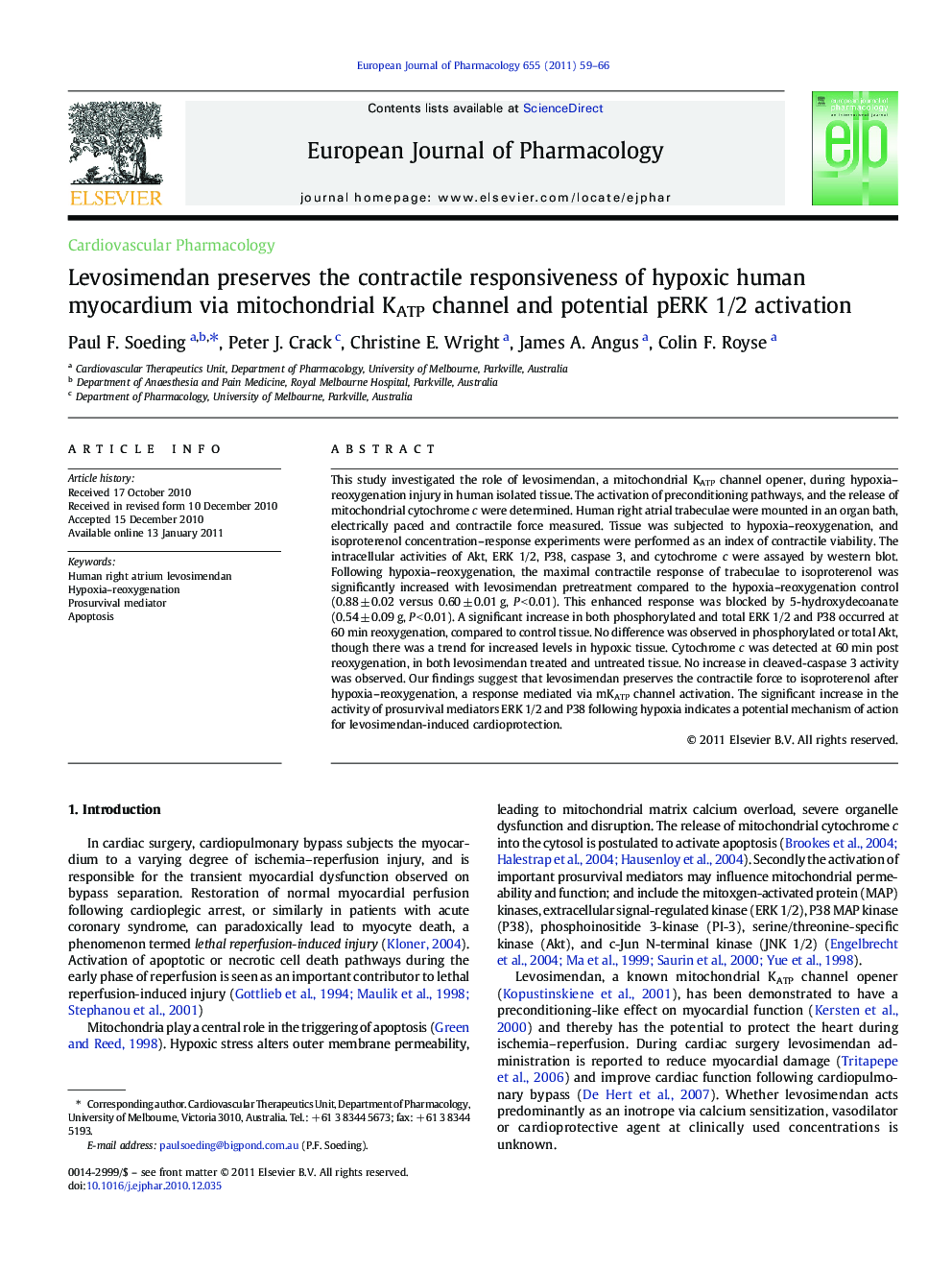| Article ID | Journal | Published Year | Pages | File Type |
|---|---|---|---|---|
| 2532819 | European Journal of Pharmacology | 2011 | 8 Pages |
This study investigated the role of levosimendan, a mitochondrial KATP channel opener, during hypoxia–reoxygenation injury in human isolated tissue. The activation of preconditioning pathways, and the release of mitochondrial cytochrome c were determined. Human right atrial trabeculae were mounted in an organ bath, electrically paced and contractile force measured. Tissue was subjected to hypoxia–reoxygenation, and isoproterenol concentration–response experiments were performed as an index of contractile viability. The intracellular activities of Akt, ERK 1/2, P38, caspase 3, and cytochrome c were assayed by western blot. Following hypoxia–reoxygenation, the maximal contractile response of trabeculae to isoproterenol was significantly increased with levosimendan pretreatment compared to the hypoxia–reoxygenation control (0.88 ± 0.02 versus 0.60 ± 0.01 g, P < 0.01). This enhanced response was blocked by 5-hydroxydecoanate (0.54 ± 0.09 g, P < 0.01). A significant increase in both phosphorylated and total ERK 1/2 and P38 occurred at 60 min reoxygenation, compared to control tissue. No difference was observed in phosphorylated or total Akt, though there was a trend for increased levels in hypoxic tissue. Cytochrome c was detected at 60 min post reoxygenation, in both levosimendan treated and untreated tissue. No increase in cleaved-caspase 3 activity was observed. Our findings suggest that levosimendan preserves the contractile force to isoproterenol after hypoxia–reoxygenation, a response mediated via mKATP channel activation. The significant increase in the activity of prosurvival mediators ERK 1/2 and P38 following hypoxia indicates a potential mechanism of action for levosimendan-induced cardioprotection.
